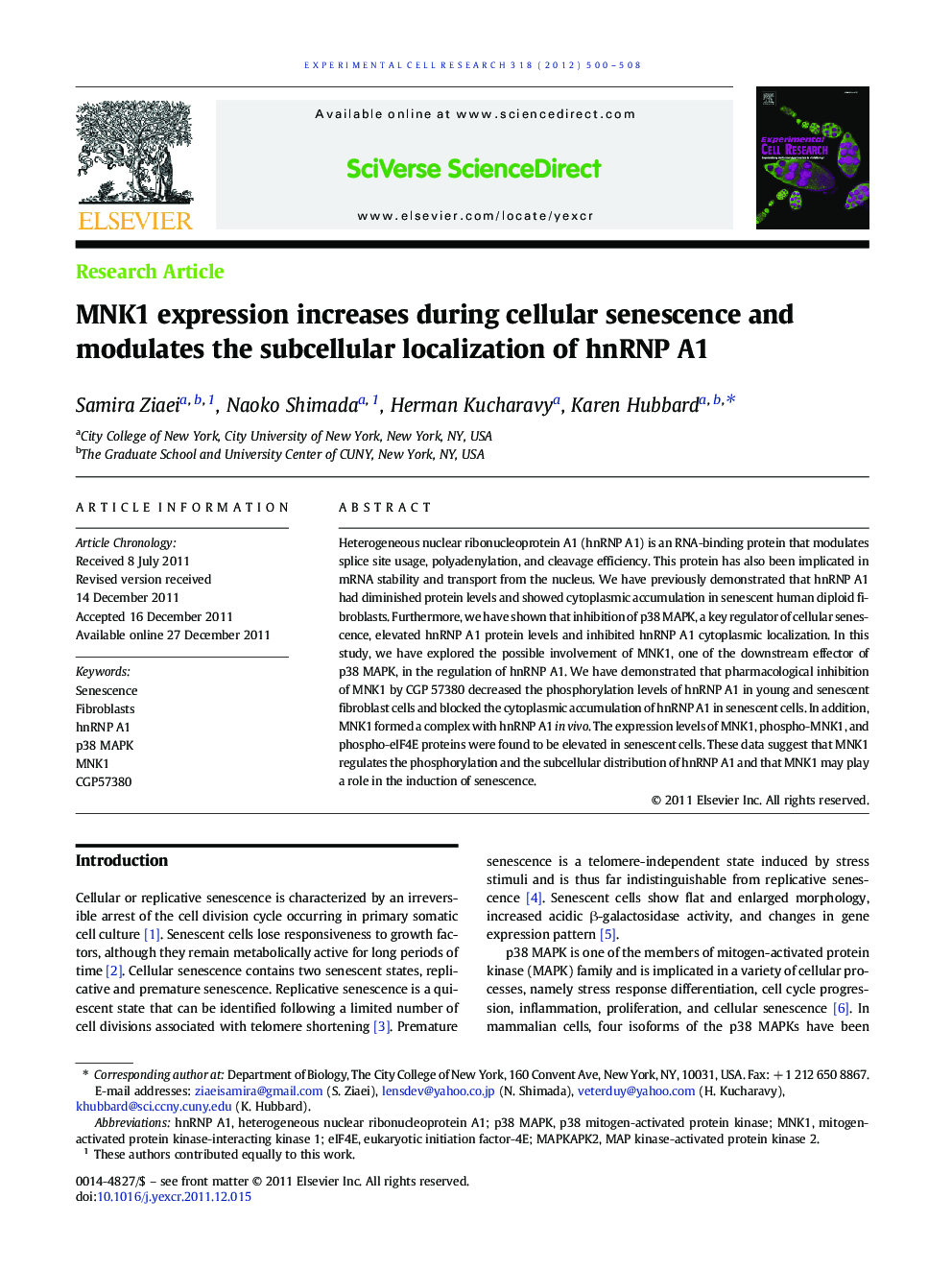| Article ID | Journal | Published Year | Pages | File Type |
|---|---|---|---|---|
| 2130728 | Experimental Cell Research | 2012 | 9 Pages |
Heterogeneous nuclear ribonucleoprotein A1 (hnRNP A1) is an RNA-binding protein that modulates splice site usage, polyadenylation, and cleavage efficiency. This protein has also been implicated in mRNA stability and transport from the nucleus. We have previously demonstrated that hnRNP A1 had diminished protein levels and showed cytoplasmic accumulation in senescent human diploid fibroblasts. Furthermore, we have shown that inhibition of p38 MAPK, a key regulator of cellular senescence, elevated hnRNP A1 protein levels and inhibited hnRNP A1 cytoplasmic localization. In this study, we have explored the possible involvement of MNK1, one of the downstream effector of p38 MAPK, in the regulation of hnRNP A1. We have demonstrated that pharmacological inhibition of MNK1 by CGP 57380 decreased the phosphorylation levels of hnRNP A1 in young and senescent fibroblast cells and blocked the cytoplasmic accumulation of hnRNP A1 in senescent cells. In addition, MNK1 formed a complex with hnRNP A1 in vivo. The expression levels of MNK1, phospho-MNK1, and phospho-eIF4E proteins were found to be elevated in senescent cells. These data suggest that MNK1 regulates the phosphorylation and the subcellular distribution of hnRNP A1 and that MNK1 may play a role in the induction of senescence.
► MNK1 and not MAPKAPK2 phosphorylates hnRNP A1. ► MNK1 has elevated levels in senescent cells, this has not been reported previously. ► MNK1 activity induces cytoplasmic accumulation of hnRNP A1 in senescent cells. ► Altered cytoplasmic localization of hnRNP A1 may alter gene expression patterns. ► Our studies may increase our understanding of RNA metabolism during cellular aging.
